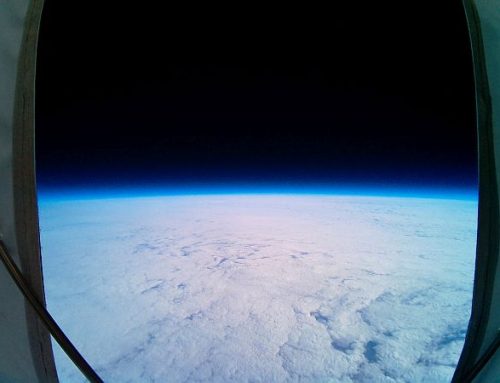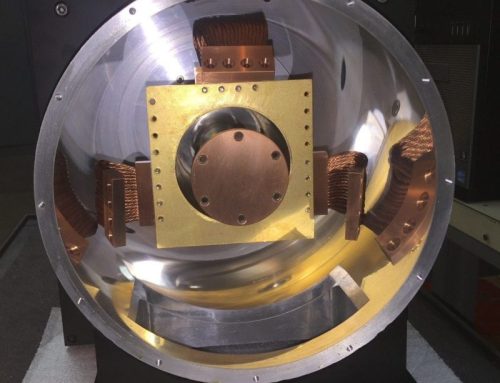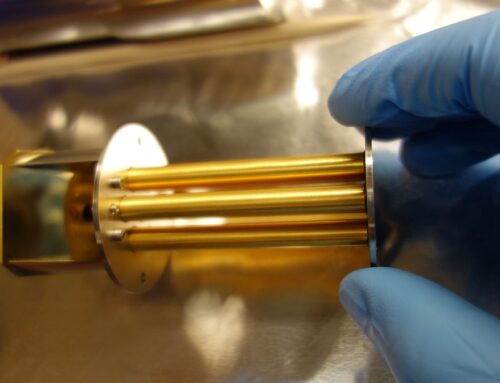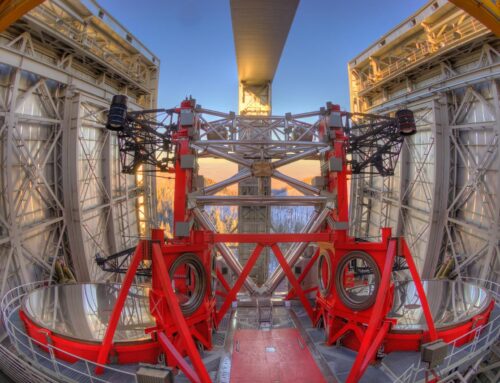Overview
GRAN CAmara INfrarroja) (GRANCAIN) is a high-resolution NIR imaging system operating in the J, H, and K infrared bands to serve the adaptive optics needs of the 10.4-meter Gran Telescopio de Canarias (GTC) operated by the Instituto de Astrofísica de Canarias (IAC).
The existing cooling platform was designed by IRLabs however, the existing cryostat was too small for the IAC’s plan to build a new IR camera using the existing HAWAII-2 detector. The new IR camera and optomechanical components required a new cryogen-free, closed cycle cryostat including a large, 140-liter vacuum enclosure.
Watch Video
Key Facts
Project: GRANCAIN NIR
Client: Instituto de Astrofísica de Canarias (IAC)
Project Location: Canary Islands
Application: Astronomy
IRLabs Product: Custom closed-cycle cryogenic system
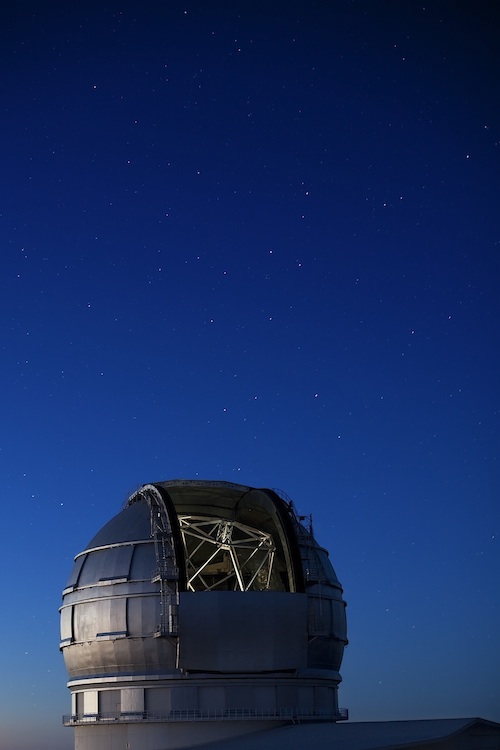
GRANCAIN is an adaptive optics imaging instrument integrated into the Gran Telescopio de Canarias (GTC) operated by the Instituto de Astrofísica de Canarias (IAC) on the Canary Islands. Photo courtesy of IAC.
Challenges
The primary challenges of this closed cycle cryostat project were related to the size of vacuum enclosure needed to house the camera and optomechanical components.
Standard dewars are cylindrical vessels that allow pressure to evenly output against the internal surfaces with minimal seams. Large systems require rectangular vessels made of six flat plates welded (top, bottom and four sides) at the seams. The flat plates and seams have more exposure to variances in internal surface pressure with potential for deformation and defects but must remain vacuum compatible and hermetic. In addition, radiation shield and cold plate temperatures need to meet operating and uniformity specifications from the center to the edges of the large vacuum enclosure.
This vacuum enclosure is large with final outside dimensions of 16.5” (419.1 mm) x 17” (431.8 mm) x 35.25” (895.35 mm), not including the protrusion of flanges for O-ring sealing of removable cover plates. The challenges related to size included:
- Minimize deformation of the larger sides (bowing) under vacuum
- Maintain vacuum seal when removable top and bottom plates in place
- Achieve 77 K cold plate operating temperature with uniformity from the center to the edges of the cold plate
- Meet technical requirements while being budget friendly
Solutions
Minimizing Deformation Under Vacuum
Under vacuum, each side plate was subject to up to 7600 lbs. of vacuum force for an enclosure of this size. To minimize bowing under vacuum pull, the plates were fabricated using 0.5” 6061 aluminum plate and internal structural reinforcements were designed, fabricated, and extensively pressure tested to ensure the enclosure met the plate deformation specifications of less than 2mm. (See Figures 1 and 2).
Durable Vacuum Seals Including Removable Cover Plates
The seams of the six-sided case were permanently welded for a durable seal. However, the GRANCAIN team needed to install instruments and work inside the enclosure, so the top and bottom covers were designed to be removable yet maintain vacuum seals when closed. The final enclosure consisted of eight plates: four sides, top, bottom and two frame plates with O-rings seated in O-ring grooves to allow the top and bottom to seal when closed and under vacuum. Adding the seamless frame plates is necessary for defect-free seals since O-ring grooves for seating O-rings can’t be milled over corner seam welds of the sides. (See Figure 3).
Operating Temperature and Uniformity
Operating temperature of the cold plate was specified to reach at least 77 K with variations of less than 10 K between the center and the edges – up to 16.35 inches (415.29 mm) distance. IRLabs was able to design and fabricate the cold plate using 6061 aluminum with an optimal grid pattern and custom thermal straps at the bottom of the cold plate to achieve 40 K operating temperature with a variance of less than 9 K, outperforming operating temperature and temperature uniformity specifications. (See Figure 4). This allows the researchers to control the system temperature over a large range with much higher temperature precision. The custom, molded copper thermal straps were also designed to reduce vibration typically associated with mechanical refrigeration (See Figure 5).
In final testing, the cold plate operated at 40 K with the radiation shield at less than 50 K – both outperforming original temperature targets. This provided the research team with more margin to work with and flexibility on adding heat loads to the enclosure. The shield and interior of the plates were Aeroglazed for reducing internal reflection of stray light.
Overview of Ports, Connectors and Other Accessories
The final enclosure included an optical window port (window supplied by IAC), two access ports, feedthrough connector, handles for lifting, and a stand to accommodate the cold head and gas lines mounted to the bottom of the case. (See Figure 6). Along with thermal strap design to reduce vibration, welded bellows were added between the cold head and the enclosure. The vacuum valve assembly included a safety burst disk. The final vacuum enclosure and compressor required custom packaging design to securely ship the system to a small island via aircraft with stringent size and weight requirements.
Final Integration and Testing of the Closed Cycle Cryostat
IAC supplied the Sumitumo CH-104 cold head with an HC4E1 compressor. We performed system integration and verified vacuum integrity and cooling performance of the closed cycle cryostat.
We worked closely with IAC to offer creative solutions to meet its temperature requirements and produce the new vacuum enclosure within budget. Large systems that require a rectangle-shaped vacuum enclosure have challenges given the enormous amount of vacuum pressure and vibration due to the compressor for mechanical refrigeration. From design to manufacturing, we worked to solve these challenges for IAC.
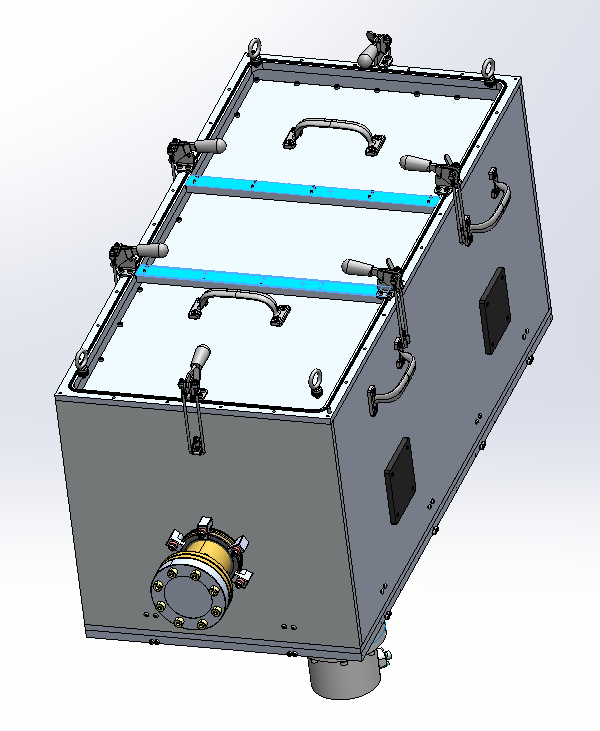
Figure 1
Internal structural supports installed with top and bottom covers were designed to keep plate deformation within specifications. The drawing shows the two bars (in blue) for the top. There are two more bars installed with the bottom cover.
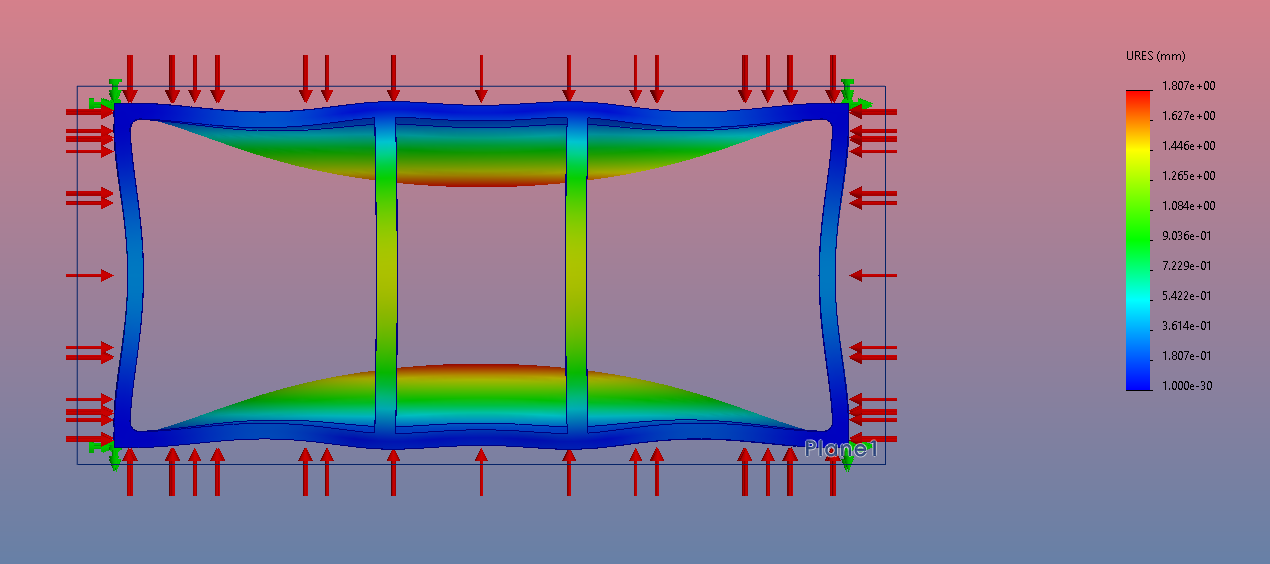
Figure 2
This illustration models less than 2mm of variable displacement of the plate under vacuum pressure using internal structural supports.
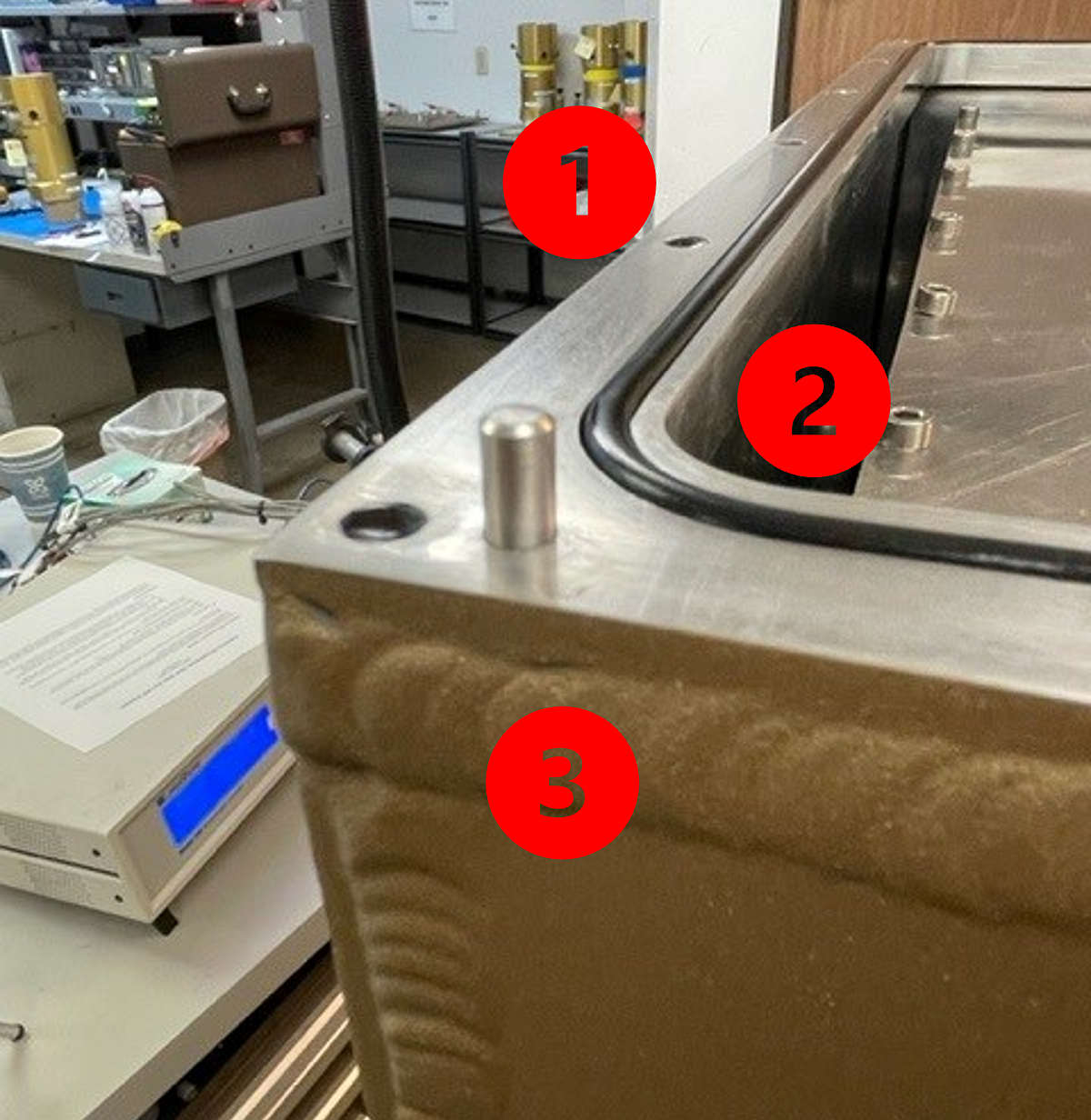
Figure 3
To accommodate removal of top and bottom plates for access by researchers to the vacuum chamber, two additional plates, designed as frames, were added so the milled O-ring grooves did contact with corner seam welds.
1: Single-piece metal frame with a continuous, milled O-ring groove for sealing the removable covers
2: This frame is necessary since O-ring grooves milled over corner seam welds introduces opportunity of vacuum leaks.
3. Permanent seam weld
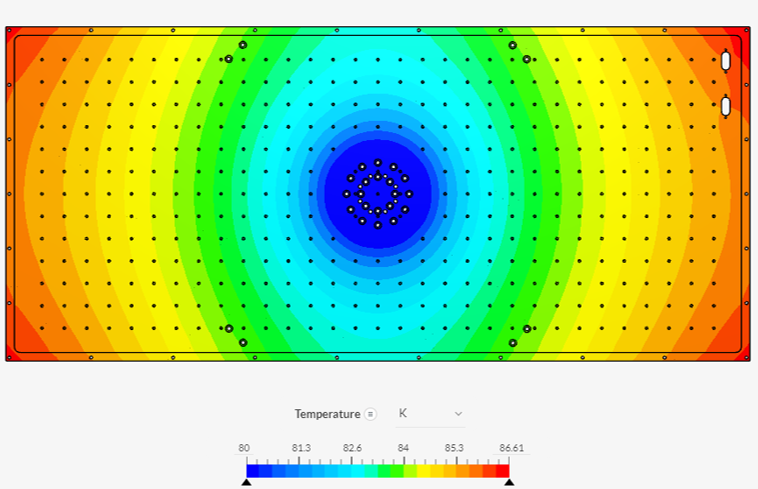
Figure 4
Temperature delta across the cold plate was specified at 10 K for less. IRLabs was able to achieve less than 7 K
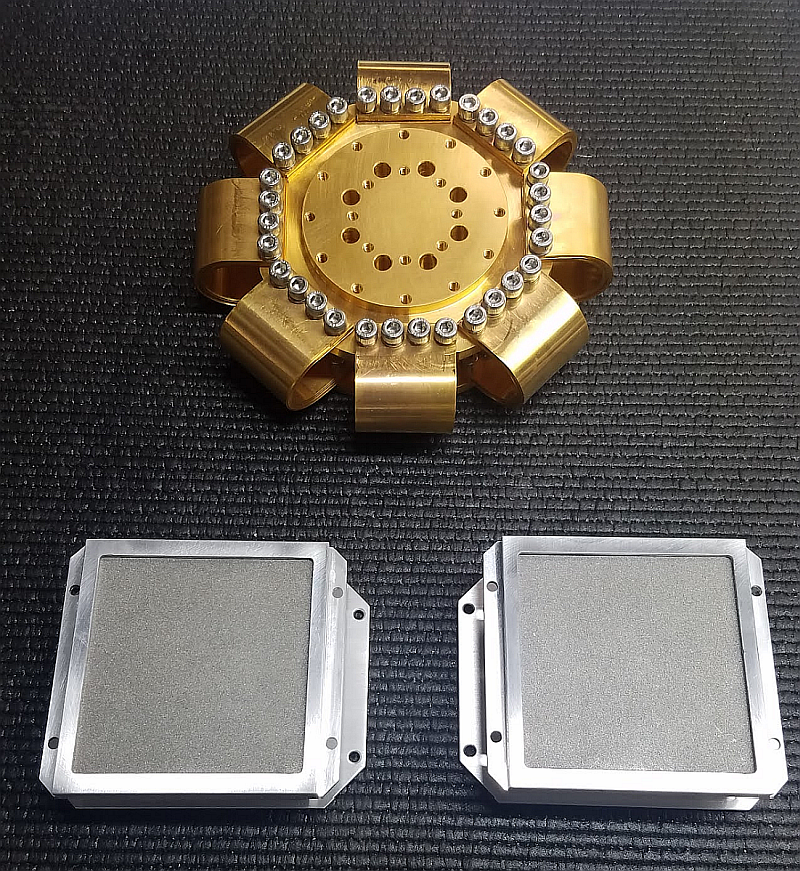
Figure 5
Getter and finished thermal strap assembly fabricated using molded copper shim stock to optimize thermal management as well as reduce vibration.
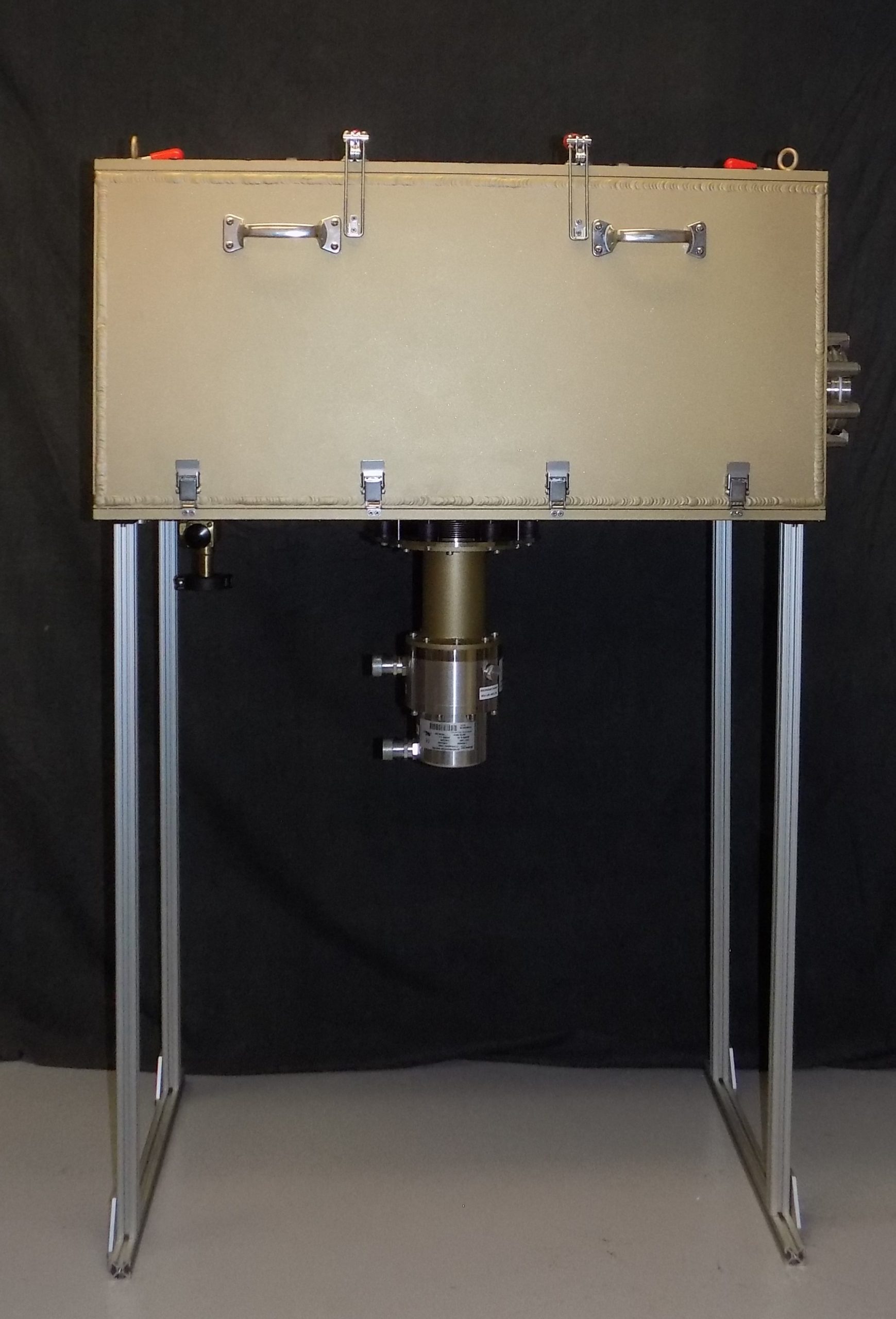
Figure 6
Exterior view of vacuum enclosure and stand.
References & Acknowledgements:
- “GRANCAIN: the first light infrared camera for the adaptive optics of GTC: optical and mechanical design status” presented at SPIE Astronomical Telescopes + Instrumentation, 2022, Montréal, Québec, Canada
- More about Instituto de Astrofísica de Canarias
- More about Gran Telescopio CANARIAS
- This activity is funded by the Canary Islands Local Government, within the program “Canarias objetivo de progreso” promoted by the European Regional Development Fund of the European Union, operative program 2014-2020. It is pre-financed through a loan from the Spanish Ministry of Economy (State Secretary for Research), the support from the State Research Agency (AEI) of the Spanish Ministry of Science and Innovation (MICINN) and the European Regional Development Fund (FEDER), under grant with reference ICTS-2019-03-IAC-12. The GRANCIN team acknowledges support from the European Union Recovery and Resilience Mechanism – NextGenerationEU. and the collaboration of the staff of the Gran Telescopio Canarias, for the help, support, advice and participation during the development of the GTCAO LGS project. This collaboration has been possible based on the agreement signed by IAC and GRANTECAN for the completion of the development of the GTC Adaptive Optics System.








